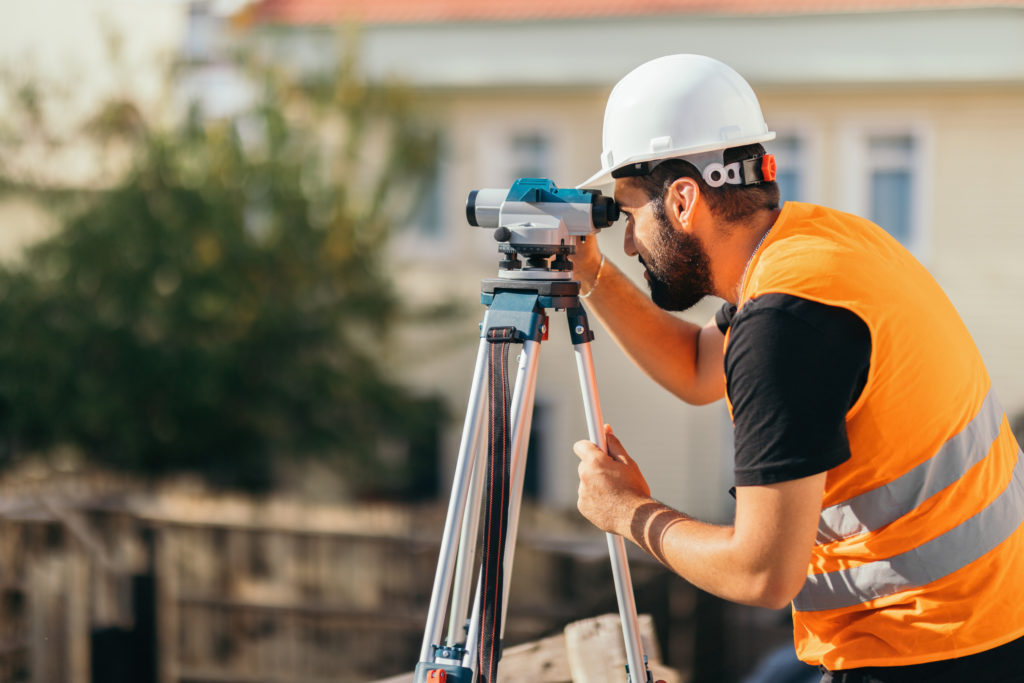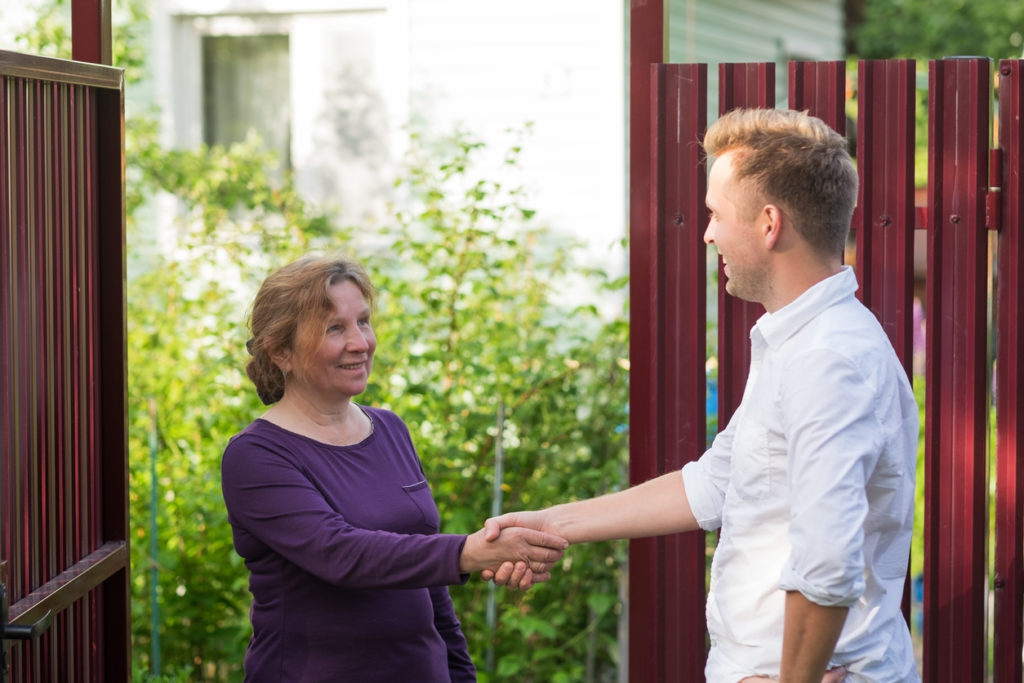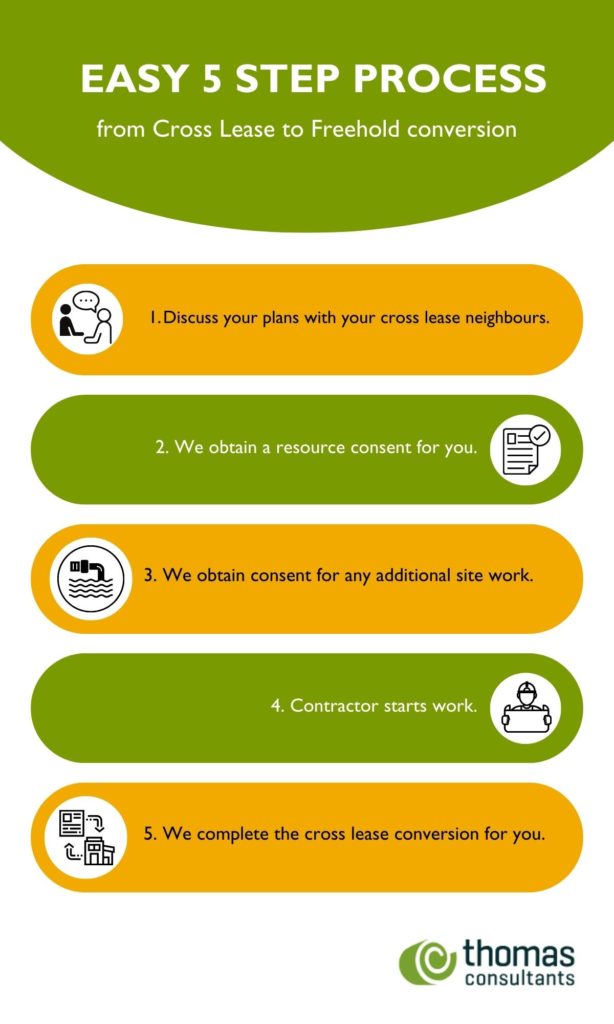Converting your cross lease property to freehold
Do you own a cross lease property? Have you ever considered converting cross lease to freehold?
With freehold ownership, you have full and absolute ownership rights over the land and the property. You are not bound by lease agreements or cross lease restrictions. This gives you complete control over your property, allowing you to make changes without needing consent from other leaseholders. Potential buyers highly value this level of ownership and control.
What you need to know
Cross lease developments are a solution to constructing multiple houses on a single property without the need for a subdivision. This approach allows all owners to enjoy an equal share in the property value, while certain areas of the site, eg: houses and garages, are exclusive to individual owners.
Your record of title may refer to your house as a ‘flat’ or an ‘area’ and describe the sharing of the land as a ‘lease’. If you wish to make changes to your part of the property, you often need your neighbour’s approval.


Issues with cross lease properties
Cross lease arrangements often involve shared property and responsibilities eg: driveways and fences. It’s likely you’ll need consent from your neighbours to make changes to your property. So, a good relationship with your neighbours is essential as changes can affect their property rights as well. Better communication means you can discuss your plans, address any concerns, and negotiate potential compromises.
It is because of these restrictions that cross lease properties often have a lower market value compared to freehold or fee-simple properties.
Let’s look at the 5 key steps to ensure a smooth property conversion.
-
Get to know your cross lease neighbours
Start by having a friendly discussion with your cross lease neighbours and reach an agreement with them about your plans.
Since all owners of a cross lease property have a say in its future, it’s important to obtain written approval from your neighbours for your conversion (subdivision) plans. This is also a good time to discuss the sharing of costs and consider documenting a financial agreement.
-
We obtain a resource consent for you
We’ll survey your property, confirm it meets planning regulations, and evaluate any driveway or drainage adjustments needed for your subdivision conversion. We’ll ensure you’re satisfied with the proposed boundaries, then prepare a resource consent application for Council approval.
-
We obtain consents for any site works required
If the driveway needs to be widened or strengthened, or if you have shared wastewater or stormwater connections, or water supply that need to be separated, we’ll prepare detailed plans for Auckland Council approval.
-
You arrange works on site
Once all the consents are approved, the site work can begin. If you don’t have a contractor, we can recommend some reputable ones to you. Our designs aim to minimise disruption and cost.
We can also take care of managing the contractors and overseeing the construction works for you. This is a process that many clients find to be a great time-saver, providing them with added peace of mind. Our engineers diligently monitor the progress and coordinate the necessary inspections and sign-offs.
-
We complete the cross lease conversion
Finally, our surveyors mark the new boundaries on site and prepare the data used by Land Information NZ to make them official. Next, it’s time for you to contact your lawyer. They need to apply for the new title records for your transformed freehold property.

FAQ's
A cross lease conversion is essentially a subdivision, where new boundaries are created to divide the property into separate sections. After the conversion (subdivision) you will each own your own part of the property.
Cross lease developments are a way to build more than one house on a single property without the cost and complexity of a full subdivision. All owners have an equal share of the value of the whole property, and certain parts of the site (eg: houses and garages) are designated for the use of one owner exclusively.
An easement gives someone else the right to use a part of your property for a specific purpose. The person with the easement doesn’t own your property, but they have permission to use it for a particular need or task.
Common examples:
- You and your neighbour share a common wall. A party wall easement grants control over shared wall upkeep and protects its structure.
- If you share a driveway/turning area with your neighbour, a right of way easement outlines both the shared and private areas.
- The underground pipes for wastewater or stormwater cross over the new boundary between your property and your neighbour’s property. With privately owned pipes, responsibility for the portion crossing your property line may fall on you under a drainage easement
A title is the electronic record of your property ownership. It includes the property size and any legal restrictions or rights. It states whether the property is cross lease or freehold (or a unit title). Thomas Consultants can purchase a title on your behalf, or a title can be order directly from Land Information NZ.
Cross lease properties often share drainage connections. For example, there may only be one wastewater connection for all the cross lease properties. The wastewater needs to be ‘separated’ to create a new wastewater connection for every house on the site.
Kick-start your cross lease conversion today
Book a complimentary 30 minute call with one of our specialists and we’ll help you get the ball rolling!
